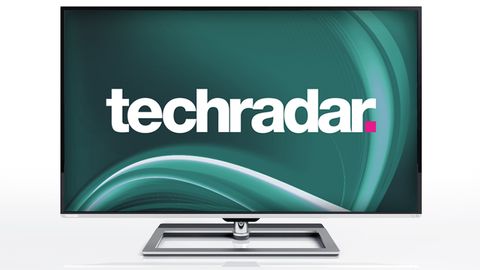TechRadar Verdict
Not nearly quick enough to act as a heavily used living room TV, the 58L9363 is best stuck in a home cinema room for watching movies.
Pros
- +
Awesome 4k detail
- +
Excellent colour
- +
HD upscaling
- +
Slim design
Cons
- -
Slow processing speeds
- -
So-so SD upscaling
- -
Fiddly Cloud TV
- -
Quiet speakers
- -
Some 3D crosstalk
Why you can trust TechRadar
As low as £2,800 online, this was until very recently the UK's most affordable Ultra HD telly.
It's been somewhat caught-out by aggressive price-cutting on Samsung's 55-inch UE55F9000 in the days prior to our review, but, inch-for-inch, it's Toshiba's larger 58-inch 58L9363DB that just about retains its crown.
Welcome to the wonderful world of 8 million pixels, somewhat confusingly called both 4K and Ultra HD.
With a LED-backlit LCD panel containing 3840x2160 pixels (you do the maths), the 58L9363DB has roughly four times the maximum detail that current Full HD 1080p tellies (which sport 1920x1080 pixels) can muster.
It's not alone in achieving this, but it is one of only a handful of fifty-something-inch Ultra HDTVs that bring the new format just about within reach of anyone who really (really) wants one.
Creeping under the £3k price, the 58L9363DB is in pole position for AV enthusiasts, but it will have to impress to persuade anyone to swerve the highly-rated attempts by Samsung (mentioned above) and Sony, whose KD-55X900A introduces a new standard of built-in speakers, too.
Toshiba's more budget-conscious 58L9363DB, however, is revolutionary in strictly one sphere - its panel.
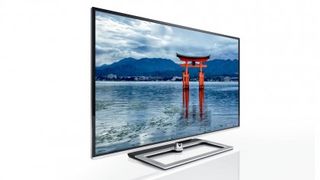
As well as being the only 58-inch Ultra HD TV on sale, it's one of relatively few to opt for the Active Shutter 3D system; most other brands (Samsung being the other exception) have plumped for Passive 3D panels, which dodge the need for pricey, battery-operated 3D specs.
Yes, we know most of you have lost interest in 3DTVs, but bear in mind that the many extra pixels on Ultra HD TVs do give a new lease of life to 3D. Or, at least, that's the theory.
Oddly, other screens in the L9 Series use the Passive 3D system. Weird, huh? The difference is down to panel availability, Toshiba tells us, but it gives us a welcome chance to grasp the lay of the land when it comes to 3D.
Perhaps a more telling difference between the 58L9363DB and other Ultra HDTVs on the market is this Edge LED TV's lack of local dimming.
As well as onscreen antics, the 58L9363DB is good-looking on the exterior, too; at just 13mm on the sides and top and a mere 19mm on the bottom, its metallic-look bezel is much slimmer than on Sony's KD-55X900A. However, it doesn't look nearly as classy.
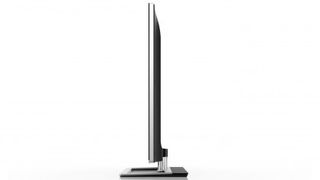
Still, it does sport a swivelling desktop stand, sleek metal foot tower and extreme slimness; its black lacquered frame is just 69mm deep at the bottom of the screen, and 55mm at the top.
Also available
Also in Toshiba's range-topping L9 Series of 4K TVs are the 65-inch 65L9363DB (£5,499) - which is also cheaper than same-size Ultra HDTVs from rival brands - and the monster-sized 84-inch Toshiba 84L9300 (£10,799.95), neither of which are a match for the super-low price of the 58L9363DB.
Features
The edge-lit LED panel's 3840x2160 pixels might be the killer feature, but there's more to the 58L9363DB. It is, at a canter, Toshiba's finest TV of 2013, and includes all of the brand's latest features.
However, this smart TV's app-laden goodies - available in a separate user interface called Cloud TV- isn't the finest around.

A three-sided user interface includes Premium Apps like BBC iPlayer, BBC Sport, Netflix, YouTube, Blinkbox, Deexer, Facebook and BBC News, with plenty more second-rung attempts - such as eBay, euronews, funspot, LiveSport.tv and iConcerts - included on an 'Other' categories page. Skype and Intel's WiDi laptop mirror tech also integrate into Cloud TV. A web browser and Miracast also feature.
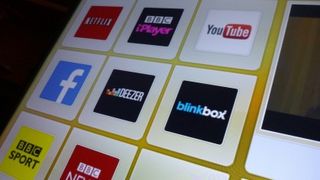
Physical ins and outs are well-judged, and utterly comprehensive.
A rear-facing panel on the back contains a wired LAN slot (though Wi-Fi is also included), a USB slot, HDMI, a full Scart (the old connector appears to be making a comeback - though it has bog-all of a role to play in the Ultra HD era), component video and associated phono inputs, a PC audio input and a RGB D-sub 15-pin analogue connector for a laptop.
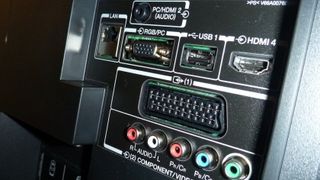
A side panel, on the TV's left-hand side as you view, completes the picture with a further three HDMI inputs (one of them ARC-compatible, another MHL-ready for wiring-up a smartphone), an optical digital audio input, headphones slot, a second USB slot, a Common Interface slot (for adding TV subscription channels… in 4K? Here's hoping), and an SDXC Card slot.
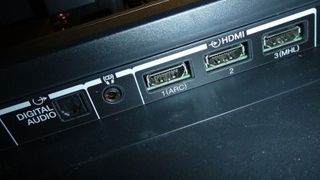
That last provision, particularly, is something of a surprise; until now only Panasonic TVs staged a SDXC Card slot, and its presence here is a big clue as to the progress of the Ultra HD revolution - thus far, it's primarily for photographers.
Proof of that comes from Toshiba itself. With no native 4K sources yet available, for the review Toshiba loaned us one of its high-end laptops sprinkled with native 4K videos in the MP4 format, which we connected via HDMI.
Digital TV comes in either Freeview HD or Freesat HD flavours, with an excellent MediaGuide (created by Rovi) extending schedule-checking to tablets.
Perhaps the most important feature of all is Toshiba's CEVO ENGINE 4K, whose Resolution+ circuitry has the onerous task of upscaling both standard definition and Full HD fare to fit the huge panel. For now, how to cope with olde worlde SD and HD - both of which are very, very much alive - is surely the acid test for any Ultra HDTV.
Jamie is a freelance tech, travel and space journalist based in the UK. He’s been writing regularly for Techradar since it was launched in 2008 and also writes regularly for Forbes, The Telegraph, the South China Morning Post, Sky & Telescope and the Sky At Night magazine as well as other Future titles T3, Digital Camera World, All About Space and Space.com. He also edits two of his own websites, TravGear.com and WhenIsTheNextEclipse.com that reflect his obsession with travel gear and solar eclipse travel. He is the author of A Stargazing Program For Beginners (Springer, 2015),

Amazon just dropped one of this year's best tablet deals – and it's not the iPad

Microsoft pinches one of the best macOS features for Windows 11 – here are three other ideas it should steal from Apple

Could generative AI save small businesses $4000 in 2024? We talk to GoDaddy about its most recent survey.
